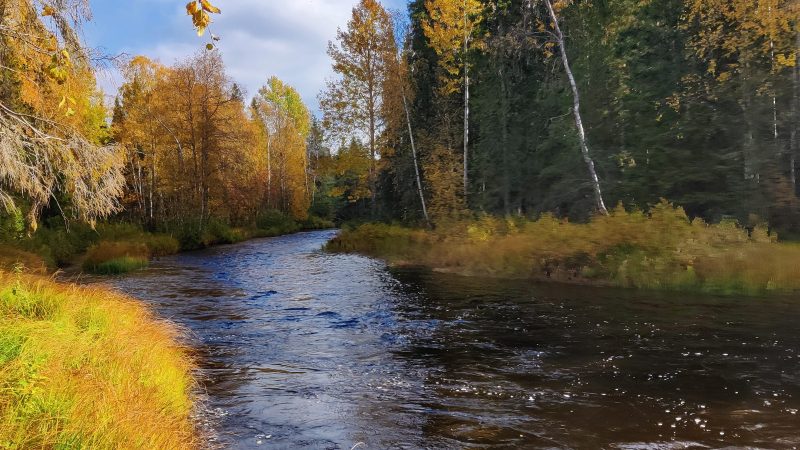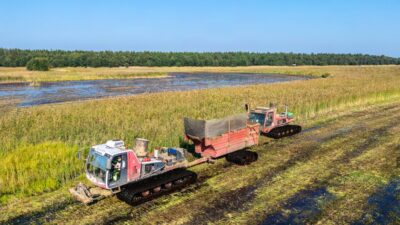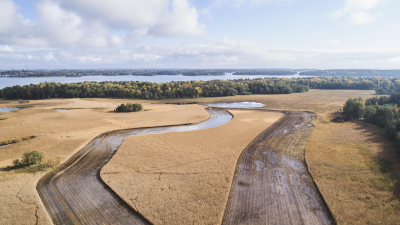VALVE Forest Project
With the VALVE Forest project, the John Nurminen Foundation, Metsähallitus, and private forest owners seek to find cost-efficient, discharge-reducing solutions and practices for water protection in peatland forestry, achieved through catchment area -based planning and cooperation between landowners.

More information:
Markku Lehtelä
Forest environment and restoration specialist
Metsähallitus Forestry Ltd.
+358 40 718 2561
markku.lehtela@metsa.fi
Anne-Mari Rytkönen
Leading water management expert
Northern Ostrobothnia Centre for Economic Development, Transport and the Environment
+358 295 083 038
anne-mari.rytkonen@ely-keskus.fi
A quarter of Finland’s standing timber is on peatland. According to latest research results, drained peatland is a significant source of nutrients, solids, and humus discharges that contribute to the load of waterways. The load from forestry to waterways is in fact greater than what has been estimated earlier. Forests on drained peatland, in particular, are a source of nutrients, solids, humus, and dissolved carbon. In addition to inland waters, the impact forestry has on waterways is evident also in the Baltic Sea.
There are a number of good methods, practices, and planning tools that can help us reduce the impact forestry has on the waterways. When planning is done per catchment area, these methods can be utilized as we identify the areas that are most important for water protection, and plan cost-efficient protection measures. Waterway-friendly forestry can be combined with other objectives for forest use. The objectives of gamekeeping and nature management are usually very much in line with the objectives of waterway protection.
The VALVE Forest Project pilots catchment area planning of waterway-friendly forestry at the Tilanjoki catchment area in lake Utajärvi, Northern Ostrobothnia, working in cooperation with the private forest owners of the area and Metsähallitus, which manages state-owned land. A catchment area plan will be drawn up for Tilanjoki, assessing the current nutrient load of the river, and seeking to find measures that curb the load. The goal is to ensure that Tilanjoki, a river with unique natural value, retains its current, excellent status.
Private forest owners who participate in the project will be compensated for the costs accrued by improving the efficiency of waterway protection, and also compensated for loss of income, if any, due to the water protection measures. Metsähallitus will simultaneously implement corresponding water management measures on state-owned land. The impact of these measures on the water quality of Tilanjoki is continuously monitored with water samples from Tilanjoki and the main branches of the ditch network.
You can read the project’s final report on the waterway-friendly forestry plan for the Tilanjoki catchment area (in Finnish). The plan was drawn up by Aino Hyttinen, forestry advisor at the Rokua-Paljakka forestry association, in cooperation with the project team and the forest owners of the area.
The project also commissioned a spatial data analysis to help in choosing locations for the waterway protection structures in the Tilanjoki catchment area; this analysis was drawn up by Mikko Niemi, Forest Resource Expert at Tapio.
The VALVE Forest project, launched in 2021, is implemented by the John Nurminen Foundation, Metsähallitus, and the forest owners of the Tilanjoki river catchment area. The project is financed by the John Nurminen Foundation, Metsähallitus, and the Ministry of Agriculture and Forestry in connection with the project subsidies for water management in agriculture and forestry. The subsidy is managed by the Northern Ostrobothnia Centre for Economic Development, Transport and the Environment.
The members of the project’s Steering Group are:
Markku Ekdahl, MTK
Aino Hyttinen, Rokua-Paljakka forest management association
Samuli Joensuu, Tapio
Antti Otsamo, Metsähallitus
Ulla Rosenström, John Nurminen Foundation
Jaana Rintala, the Northern Ostrobothnia Centre for Economic Development, Transport and the Environment
Anne-Mari Rytkönen, the Northern Ostrobothnia Centre for Economic Development, Transport and the Environment
Arto Tolonen, Metsähallitus
Matti Välimäki, Suomen Metsäkeskus
Aleksi Räsänen, Natural Resources Institute Finland
In cooperation with:



